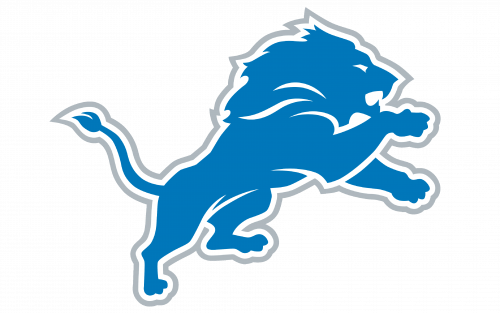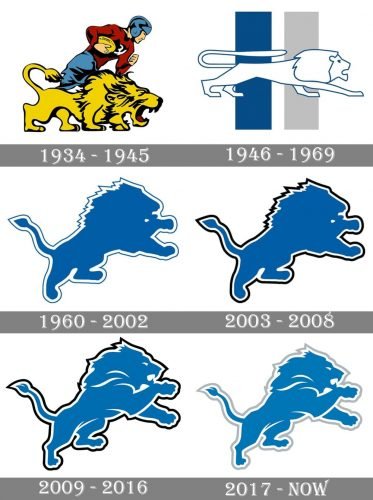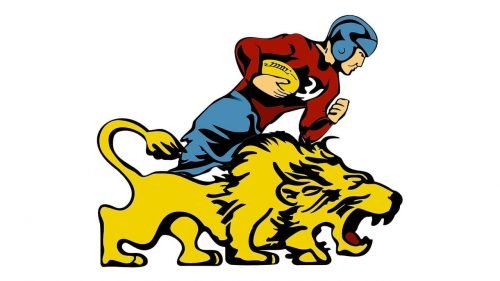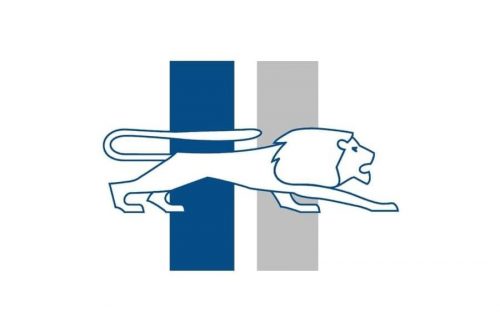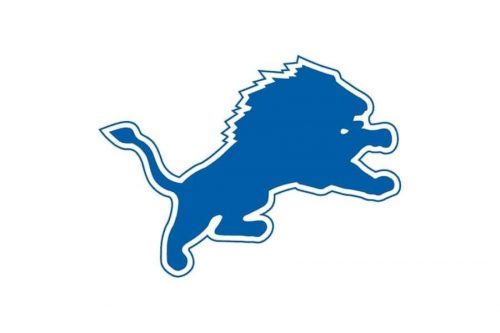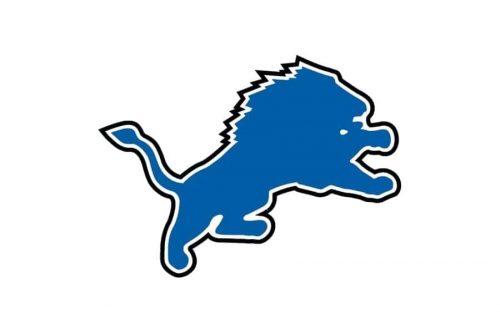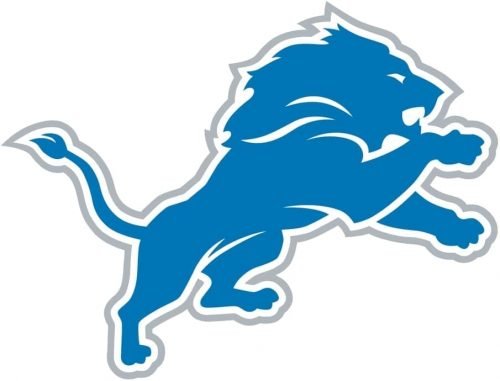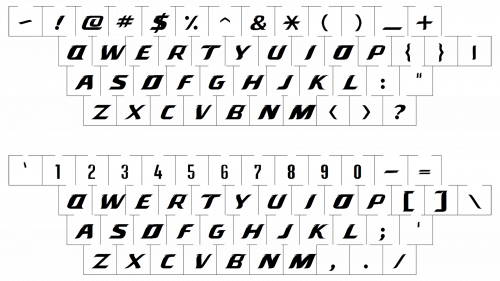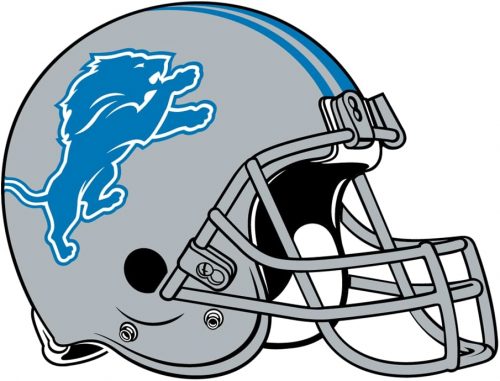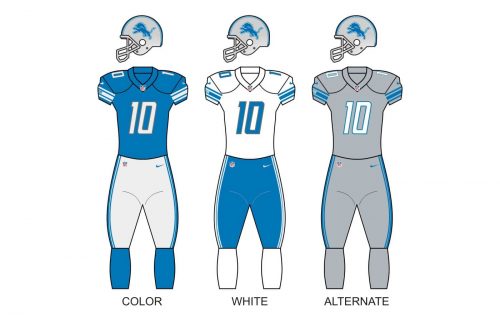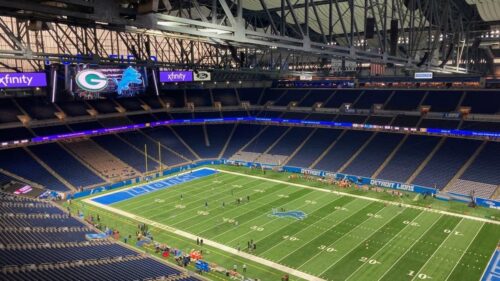For most of its history, the Detroit Lions logo has been built around a stylized lion. The lion logotype was adopted in 1952, when the team got its current name.
Brand Overview
The Detroit Lions are an infamous NFL record holder, as they are the only team in the National Conference that has never played in the Super Bowl. However, the Lions have won four League Championships, Conference Championships, and Division Championships, and 21 playoff appearances.
And in 2008, the Detroit Lions set another anti-record, becoming the first team in NFL history to lose every regular season game and finish 0-16. It was the final year of the famous “The Curse of Bobby Lane” that began in 1958 when the Lions, after a championship season, traded their primary quarterback Bobby Lane. Legend has it that upon leaving Detroit, Lane said: “This team won’t win for 50 years.”
In the 50 years following the trade, Detroit had the worst winning percentage of any team in the NFL, made the playoffs only 11 times, and managed to win only one blowout game. The story was called the Curse of Bobby Lane.
The team’s history began in 1930. The Lions’ progenitors were the Portsmouth Spartans, a team based at Ohio State. “The Spartans started playing in the NFL in 1930 and were quite a successful team, and already in their second season, they managed to finish second in the league and 1932 together with Chicago Bears became participants of the first playoff game in NFL history. However, financially the club was not doing so well and in 1934 the Spartans were bought by a Detroit businessman. After the move, the name was changed to the Lions. Since then the team has never moved to another city.
Meaning and history
The history of the Detroit Lions visual identity is an illustration of the club’s growth and progress. It all started with a bit naive and very detailed image executed in a realistic color palette, and throughout the year the emblem came to a modern and bright badge, which could easily be used by a luxury car marque.
1934 — 1945
The very first logo for Detroit Lions football club was introduced in 1935 and featured an orange and blue composition, where the lion with its mouth open and a football player with a rugby ball in his hands was facing right. The player was wearing a red and blue uniform with a blue helmet, while the lion was executed in a gradient orange and yellow palette. It was a simple and delightful emblem, which was just a graphical representation of the team’s name and purpose. The badge stayed with Detroit Lions for almost a decade.
1946 — 1969
The redesign of 1946 brought a completely new image to the Detroit Lions visual identity, making the emblem modern and stylish. The new badge was composed of two wide vertical stripes in blue and gray, placed on a white background, and a white lion’s silhouette in a thin blue outline. The animal’s figure was placed over the stripes and had its legs stretched, moving to the right. It was a stylish and fresh emblem, representing the progress and confidence of the football clubs
1960 — 2002
In 1969 the lion was redrawn again. Two stripes were removed from the background and the lion’s silhouette was now executed in solid blue, outlined in white and blue. The animal also changed its pose from walking to jumping, which gave a more powerful and dynamic mood to the whole image. This version of the logo stayed with the team for more than forty years.
2003 — 2008
With the redesign of 2003, the color palette of the Detroit Lions visual identity was slightly modified: the outer line of the image was switched from blue to black, giving a stronger contrast to the drawing and adding professionalism and determination to the club’s qualities.
2009 — 2016
The blue lion’s figure gained some white accents in 2009. The emblem started looking more vivid and realistic, as the whole lines added movement to the solid silhouette, evoking a sense of speed and energy. The contours were also modernized, making the silhouette more realistic.
2017 — Today
The redesign of 2009 only switched the color of the emblem’s outline, but the whole mood of the logo evolved. The thick black line was replaced by solver-gray, which added elegance and style to the image, showing Detroit Lions as a professional team and reflecting its experience, authority, and seriousness.
Symbol
In 1970, the iconic leaping lion appeared in the logo for the first time. It had a white outline and one more, black, outline around it. Since then, the symbol has been tweaked three times (in 2003, 2009, and 2017).
The latest version has more details than the 1970 one. Instead of the black outline, there is a grey one.
Font
In addition to the Lion emblem, the club has also a wordmark. Instead of the Wayne font used in the previous version, the 2017 wordmark features a custom typeface. It looks unique due to the unusual sharp elements at the ends of the letters.
Color
The team’s official colors include Honolulu blue, silver, and white. All of them can be seen in the current Detroit Lions logo.
Helmet
The funny thing about the Detroit Lions blue logo, placed on the sides of silver helmets with blue stripes, is that for many it looks pretty similar to the famous Peugeot insignia, and the palette of the helmet design only enhances the feeling of an auto badge. It is even more hilarious, as the Lions represent Detroit, the automaking capital of the United States tate, which washome to all legendary American car marques.
Uniform
The color palette of the Detroit Lions club is based on Honolulu blue and silver shades, and for the uniform design, these colors are accompanied by white. The primary uniform design features a blue jersey with white stripes and white pants with stripes in blue. The secondary uniform has the jersey in white and the pants in blue. And the alternate uniform of the Lions, the calmest, yet the most elegant one, — silver-gray jersey and pants with blue details and white numbers.
Home ground
Since 2002 Detroit Lions have been playing onFord Field, a stadium, which was renovated in 217, and today has a capacity of 65,000 seats, expandable to 70 thousand. Prior to that, the club played on Pontiac Silverdome for more than 25 years, and on Tiger Stadium, for almost three decades. Right after the move from Portsmouth, the Lions were based at the University of Detroit Stadium.
Colors
HONOLULU BLUE
HEX COLOR: #0076B6;
RGB: (0, 118, 182)
CMYK: (100, 45, 0, 10)
PANTONE: PMS 7462 C
SILVER
PANTONE: PMS 8180 C
HEX COLOR: #B0B7BC;
RGB: (176, 183, 188)
CMYK: (3, 0, 0, 32)
BLACK
PANTONE: PMS BLACK 6 C
HEX COLOR: #000000
RGB: (0, 0, 0)
CMYK: (0, 0, 0, 100)
WHITE
HEX COLOR: #FFFFFF
RGB: (255, 255, 255)
CMYK: (0, 0, 0, 0)


